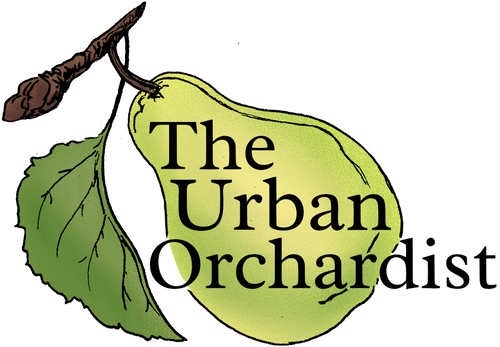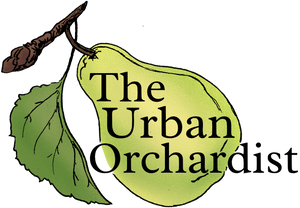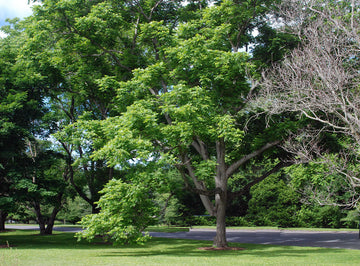In the interest of appreciating the heartnut species, I’d like to share some research and thoughts regarding heartnut’s relationship to other relevant Juglans species, in particular butternut and their potential to hybridize.
The Juglans genus consists of 22 species worldwide, with two native to Turtle Island / North America – butternut (Juglans cinerea) and black walnut (Juglans nigra), both deciduous hardwood trees (Zhang et al. 2019).
Butternut is a beautiful tree, but one I’ve rarely seen. I know of a few in the Guelph area, but despite my monitoring efforts over the years I’ve never seen the nuts. Since at least the 1960s, butternuts have suffered greatly from a fungal disease known as butternut canker (the scientific name is Ophiognomonia clavigignenti-juglandacearum – a real mouthful), which is spread through rain, wind, and insects (Furnier et al. 1999). This is the major contributor to the butternut’s decline and listing as an endangered species (see COSEWIC 2017 for an in-depth species assessment). Also, like most native trees their population has declined from the widespread and ongoing deforestation brought by colonization, the import of European slash-and-burn agriculture, and urban growth.

(Figure 1: Butternut range map. Image source: COSEWIC 2017).
Hybridization and naturalization
Japanese walnut has been planted on this continent since the mid-19th century, and can cross-pollinate and hybridize with the native butternut (which can also hybridize with the Persian or English walnut) (Hoban et al. 2012). Heartnut-butternut hybrids are called buartnuts, and these hybrids are generally vigorous trees that are more resistant to butternut canker than the native butternut. This relationship mirrors the relationship between the native American chestnut (genus species) and the Chinese chestnut (genus species), where the former has nearly gone extinct from a disease, yet hybrids of the two have immunity.
Hybrid buartnuts can look so similar to the butternut that identification via physical/morphological traits is very difficult (for example, identifying traits include pith width and colour, lenticel size and shape, and the upper margin of leaf scars, among others), requiring researchers to use genetic or molecular methods of identification (this is a practice used for differentiating other species at risk, such as red & hybrid mulberries, and animals like the Jefferson salamander) (Ross-Davis et al. 2008).
Naturalized Japanese walnuts, heartnuts (a natural mutation of the Japanese walnut with heart-shaped nuts that otherwise behave as Japanese walnuts), and the hybrid buartnuts present some concern to species conservationists. Similar to the concern with (native and declining) red mulberry and (introduced and thriving) white mulberry, there is a concern that pure butternut could cease to exist as a unique species, with its genome being outperformed and assimilated by the canker-immune hybrids.
How valid is this concern? Some research has found that hybridization occurs more often in human-altered landscapes (human settlements and their periphery, fencerows, abandoned pastures, etc.), and is limited in forests – again, similar to the situation with red and white mulberries (Hoban et al. 2012). This naturally leads me to consider the importance of protecting healthy native forests and other natural landscapes as an essential part of native plant conservation – I’ve always thought the native plant conservation movement would be a natural ally to environmental movements like the efforts protect Ontario’s Greenbelt, as well as with Indigenous-led decolonization efforts that give authority back to this land’s original people.
Butternut’s place in Juglans taxonomy
Given that the concern around heartnut naturalization is due to it’s ability to hybridize with the native butternut, it is interesting to note that the butternut’s genome is a hybrid mosaic comprised of genes from lineages related to black walnut (J. nigra) and Asian butternut (J. mandshurica) (Zhang et al. 2019). This leads me to broader questions that are both biological and philosophical, surrounding the origin and differentiation of species.
The Juglans genus is divided into three groups, or clades, and J. cinerea has occupied disputed territory in the genus. When assessed according to the genome of the chloroplast (the chloroplast is where photosynthesis occurs, and is a maternally-inherited site of energy production analogous to our mitochondria), J. cinerea shares a clade with the North American black walnut, J. nigra. However, when assessed according to the genome of the nucleus, J. cinerea belongs to the Asian butternut clade.
The conclusion from multiple studies is that J. cinerea, which we know as the native butternut, originated from hybridization between the black walnut and Asian butternut lineages, with most of its nuclear genome coming from Asian butternuts (Zhang et al. 2019). This hybridization may have been between a progenitor lineage, aka a ghost lineage (an ancestral lineage that no longer exists, but which contributed to species that exist today) of J. nigra, and either the extant or progenitor/ghost lineage of J. mandshurica (Asian butternut). The most likely speciation scenarios show the hybrid species we know as J. cinerea as originating between 600,000 – 900,000 years ago (Zhang et al. 2019).
An embrace of hybridization
“Gene flow, in the form of hybridization and introgression, is increasingly recognized as a contributor to the evolution of organisms” (Zhang et al. 2019).
Hybridization is a cause of speciation. Hybridization resulted in the butternut, as well as many crops we enjoy as food – apples, bananas, wheat, and more. What if, instead of closing off gene pools in an attempt to preserve distinct lineages of native and non-native species, we embraced hybridization as a process that widens gene pools and results in more diverse and resilient tree and plant genomes (Brennan et al. 2020)? I know that some species of native plants have very specific relationships with native insects, and that is an excelent reason to preserve those species, but I have yet to find information on such relationships with butternut.
What if there were no J. ailantifolia on the continent at all, and butternuts went extinct? Would we then wish for a nearly-identical tree that not only successfully mates with the native butternut, but also produces delicious nuts? What if, instead of looking at the hybridization between a struggling native species and a vigorous introduced species as a threat, we looked at this hybridization as a tremendous gift, or a lucky coincidence, that results in prolific disease-resistant trees that very closely mimic the native trees we cherish?
Whether we embrace hybridization or not, this is already occurring in forests throughout butternut's range, and this may be the key to keeping any semblance of butternut alive. Offspring of seemingly resistant butternuts still die from butternut canker, yet hybrids have at least some immunity (see Pike et al. 2020 for further discussion).
And why not breed them? Horticulturists the world over, for millennia, have sought out compatible species for interspecific crosses (crosses between different species), in order to explore genetic possibilities. Hybrids between J. ailantifolia and J. cinerea could be embraced and explored for a delicious, disease-resistant, perennial food source, in the same way that hybrids of American and Chinese chestnuts or American and European hazelnuts are being explored and developed.
To conclude, I humbly recognize that this is a multi-faceted, complex, and ongoing topic, and my research has, for practical reasons, not been exhaustive. There are perspectives and data that I have not yet encountered or considered, and I am more than happy to have any statements in this article challenged. I'm grateful to the researchers I've cited, and any inaccuracy here is entirely my own. I’ve done my best to be scientifically literate on the subject, but I am still more a layperson than an expert in the field. I also recognize that some people with a particular passion for native species conservation may be frustrated by my endorsement of useful plant hybrids, and I am open to a fruitful conservation if you want to reach out. Lastly, thanks for reading. I hope you found it interesting.
References
Title image sourced from Oregon State University https://landscapeplants.oregonstate.edu/plants/juglans-ailantifolia.
Brennan, A.N., et al. 2020. Hybrid Breeding for Restoration of Threatened Forest Trees: Evidence for Incorporating Disease Tolerance in Juglans cinerea. Front. Plant Sci., 11.
Broders, K.D. and Boland, G.J. 2011. Reclassification of the butternut canker fungus, Sirococcus clavigignenti-juglandacearum, into the genus Ophiognomonia. Fungal Biology, 115(1), 70-79.
COSEWIC 2003. COSEWIC assessment and status report on the butternut Juglans cinerea in Canada. Committee on the Status of Endangered Wildlife in Canada. Ottawa. vii + 32 pp.
Furnier, G.R., et al. 1999. Genetic evidence that butternut canker was recently introduced into North America. Can. J. Bot., 77, 783–785.
Hoban, S.M., et al. 2012. Human-impacted landscapes facilitate hybridization between a native and an introduced tree. Evolutionary applications, 5(7), 720-731.
Marazzi, Brigitte, et al. Juglans ailantifolia: A new alien walnut tree species naturalized in Switzerland and Italy. 2021. Bollettino della Società Ticinese di Scienze Naturali, 109, 57-68.
Pike, C.C. 2020. Save Our Species: A Blueprint for Restoring Butternut (Juglans cinerea) across Eastern North America. Journal of Forestry, 119(2), 196–206.
Ross-Davis, A., et al. 2008. Morphological and molecular methods to identify butternut (Juglans cinerea) and butternut hybrids: relevance to butternut conservation. Tree Physiology, 28, 1127–1133.
Zhang, B-W., et al. 2019. Phylogenomics Reveals an Ancient Hybrid Origin of the Persian Walnut. Molecular Biology and Evolution, 36(11), 2451–2461.


